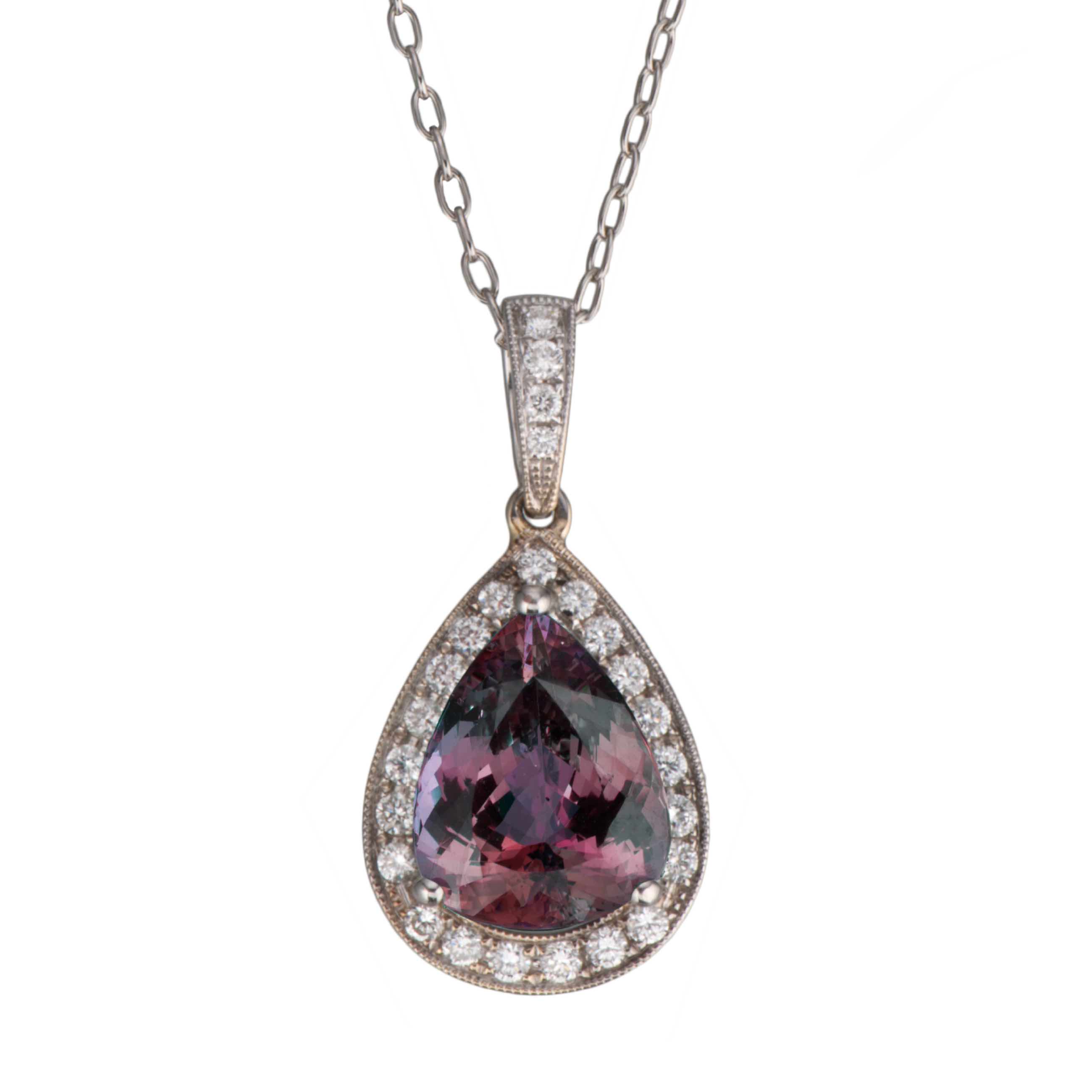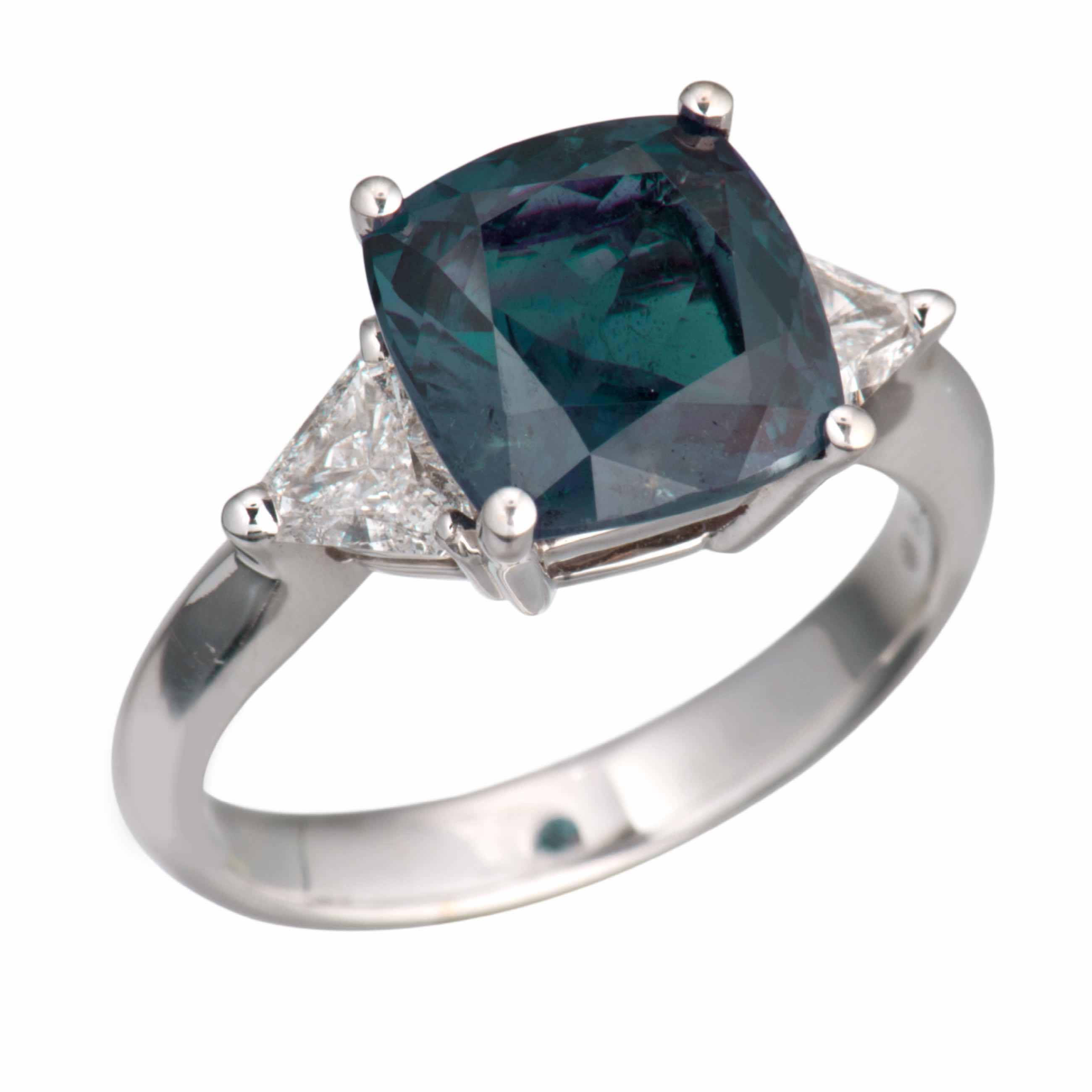
ALEXANDRITE: June Birthstone

ROMANCE, HISTORY & LORE
In gemology, the use of the word phenomenon specifically refers to a gemstone’s ability to produce extraordinary displays of beauty, a result of the unique ways light reacts to the gemstones chemical makeup or its physical structure. Two of the most common examples are the star effect, or asterism, seen in sapphire and ruby, and the cat’s eye phenomenon known as chatoyancy, often seen in tourmaline and chrysoberyl. Other examples of phenomenon in gemstones include play of color in opal, moonstone effect in feldspar and the sheen effect of light seen in labradorite, known as labradorescence. The gemstone alexandrite is precious precisely because of its phenomenon. As Edwin Streeter once wrote, “The wonderful alexandrite is an emerald by day and an amethyst at night.” He expressed his admiration because of the gemstone’s remarkable ability to appear green in daylight and plum red in the warmer tones of firelight or candlelight (incandescent) in the evening. Long associated with Russian royalty, the rare alexandrite was discovered in Russia’s Ural Mountain range in 1833 and was named after the Russian Czar Alexander II. Since its discovery two centuries ago, alexandrite has long been coveted as one of the rarest and most cherished gemstones of all.

ORIGINS
For centuries, Russia remained the only source of alexandrite until deposits were discovered in Sri Lanka. Sri Lankan alexandrite appears green in daylight but more of a brownish red than plum red in incandescent light. With the discovery of alexandrite in 1997, Brazil has become a significant source of alexandrite on the market. While the color change is not as dramatic as some of the finer Russian alexandrite, it is can still be very pronounced.

India also produces a limited amount of alexandrite and gemologists are hopeful for future alexandrite discoveries in East Africa, Australia, and Asia. However, because the geographic conditions that produce alexandrite are so unusual, experts generally agree that future discoveries are unlikely.
ENHANCEMENTS
While most gems are treated to improve their color or clarity, there are no known treatments to enhance the beauty of alexandrite.


SELECTING A STONE
A genuine piece of alexandrite jewelry is an incredible addition to any collection. With a hardness of 8.5, alexandrite is a stone suited to everyday wear; only diamond, ruby, and sapphire are harder. Because of its long-lasting nature and extreme rarity, alexandrite is an exceptional choice for an engagement ring or legacy piece. Alexandrites up to 5 carats were traditionally found only in the Ural Mountains. Other deposits in India and Sri Lanka have produced a few large specimens, but any alexandrite over 3 carats is rare. With Brazilian alexandrite much of the production is smaller, although 1 to 2 carat gemstones can be found. The defining characteristic of fine quality in an alexandrite is the degree to which it shows a distinct change from green to red. Alexandrite selectively absorbs most colors of light and transmits very strongly in the green and red wavelengths. In daylight (or fluorescent), strong in blue and green light, it appears green. When viewed under incandescent (candle light or firelight is best) light alexandrite transmits the strong reds produced by that kind of light. The more pronounced the change from green to red, the rarer and more valuable the gemstone.
Because of alexandrite’s value and rarity, gemstones sold as “alexandrite” refer exclusively to the variety of chrysoberyl exhibiting color change. Any other gemstones exhibiting a similar color change should be sold as “alexandrite-like”, or “change of color”. Laboratories have been able to produce synthetic alexandrite since the 1970’s. Lab-grown alexandrite has the same look and properties as natural alexandrite but is far less valuable. Another popular imitation alexandrite is synthetic color change sapphire, which has been manufactured and sold as an alexandrite impostor for over 100 years. Many of these synthetic alexandrite-like sapphires were sold to tourists in Mexico or Egypt after World War II, and still circulate in the market


CARE
Alexandrite is not temperamental gemstone, but because of its value, it should be diligently cared for. To clean alexandrite jewelry at home, use a soft brush and a solution of warm and gentle dish detergent. Clean the gemstone thoroughly to remove any dirt or oils that can affect the gemstones brilliance.

